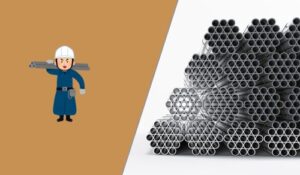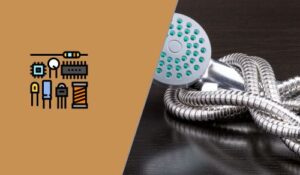When it comes to installing a custom waterfall shower, the process can be daunting for those unfamiliar with its unique demands. Without the proper preparation, you might face complications such as leaks, insufficient water pressure, or improper positioning. However, by understanding the essential requirements, you can ensure a seamless installation and enhance the luxury experience that waterfall showers offer.
Installing a custom waterfall shower requires careful planning and consideration of several factors. These include ensuring that the ceiling or wall structure can support the weight of the shower head, proper placement at around 80-84 inches from the floor, and making sure water pressure meets the manufacturer’s requirements. Additionally, installing a reliable thermostatic mixer is crucial to controlling water temperature effectively.
Let’s explore the detailed requirements and address other common queries related to custom shower systems.
How High Should a Waterfall Shower Head Be?
When installing a waterfall shower head, positioning is critical for optimal performance. Most experts recommend installing the shower head between 80 to 84 inches from the shower floor. This ensures the water flows properly and covers the entire body without being too high or too low. Adjustments can be made depending on the user’s height, but this range is typically ideal for most installations.
Additionally, it’s important to ensure that the mounting area can support the weight of the shower head. In some cases, reinforcement may be required for both ceiling and wall-mounted waterfall shower systems.
What Are the Requirements for a Rain Shower Head?
Rain and waterfall shower heads are designed to mimic the sensation of natural rainfall. These heads are typically 6 to 12 inches in diameter to provide full-body coverage. One key consideration is ensuring sufficient water pressure, as larger shower heads often require higher pressure (at least 45 psi) to maintain a steady and even water flow.
Moreover, selecting the correct size shower arm is crucial. Depending on the size of the head, either a ceiling-mounted or wall-mounted arm may be required. The arm must be strong enough to support the weight of the shower head and ensure its stability over time.
What Are the Installation Requirements for a Custom Thermostatic Bath Shower Mixer?
A custom thermostatic bath shower mixer is essential in high-end shower systems, providing precise temperature control and preventing sudden changes in water temperature. When installing a thermostatic mixer, the following steps are crucial:
- Access to Hot and Cold Water Supply: The mixer requires a connection to both the hot and cold water lines. Make sure these lines are accessible and meet the water pressure requirements for the system.
- Correct Positioning: The mixer should be installed within easy reach, typically mounted on the wall at a convenient height. Many luxury shower systems embed the mixer into the wall for a sleek, minimalist look.
- Compliance with Standards: Ensure that the mixer meets international safety and performance standards. This is especially important in commercial settings, such as hotels or residential developments, where safety and quality are paramount.
By integrating a thermostatic mixer into your custom shower system, you can ensure a consistent and comfortable bathing experience, minimizing the risk of sudden temperature changes.
Are Waterfall Showers Any Good?
Waterfall showers have become a popular choice in luxury bathroom designs due to their relaxing and immersive experience. These showers mimic the flow of natural waterfalls, providing a soothing and spa-like atmosphere.
While waterfall showers often cost more than standard options, they are considered worth the investment. Their aesthetic appeal and water coverage make them a desirable feature in high-end homes, luxury hotels, and commercial properties. However, because the installation can be complex—particularly in ensuring proper water flow and preventing leaks—it’s advisable to hire professionals with experience in custom shower systems.
Common Issues with Shower Faucets That Require Service
Even with the best installations, shower systems may encounter problems over time. Here are some common issues that may arise with custom shower systems:
- Inconsistent Water Pressure: Over time, debris or mineral deposits may build up in the shower head, reducing water pressure. This is particularly common in areas with hard water. Regular cleaning and maintenance can help prevent this issue.
- Leaks: Leaks may occur due to worn-out seals or improper installation. Regularly checking seals and gaskets can help prevent leaks and ensure the longevity of the shower system.
- Thermostatic Mixer Malfunction: A thermostatic mixer may stop regulating temperature properly if it becomes clogged or the internal mechanism wears out. Recalibration or replacement of parts may be necessary to restore full functionality.
- Valve Wear and Tear: Over time, valves controlling water flow may wear out, causing inconsistent water temperature or flow. Replacing these valves when they show signs of damage is essential to maintaining a functional shower system.
To avoid major service disruptions, it’s a good idea to schedule regular maintenance checks, especially in commercial properties or luxury residences where frequent use is expected.
Conclusion
In conclusion, installing a custom waterfall shower requires thoughtful planning and expert execution. From ensuring proper structural support to maintaining ideal water pressure, every detail plays a crucial role in achieving the desired luxury experience. Don’t forget that adding a thermostatic mixer enhances safety and comfort. With the right approach, your custom waterfall shower can be a lasting centerpiece in any luxury bathroom project.




